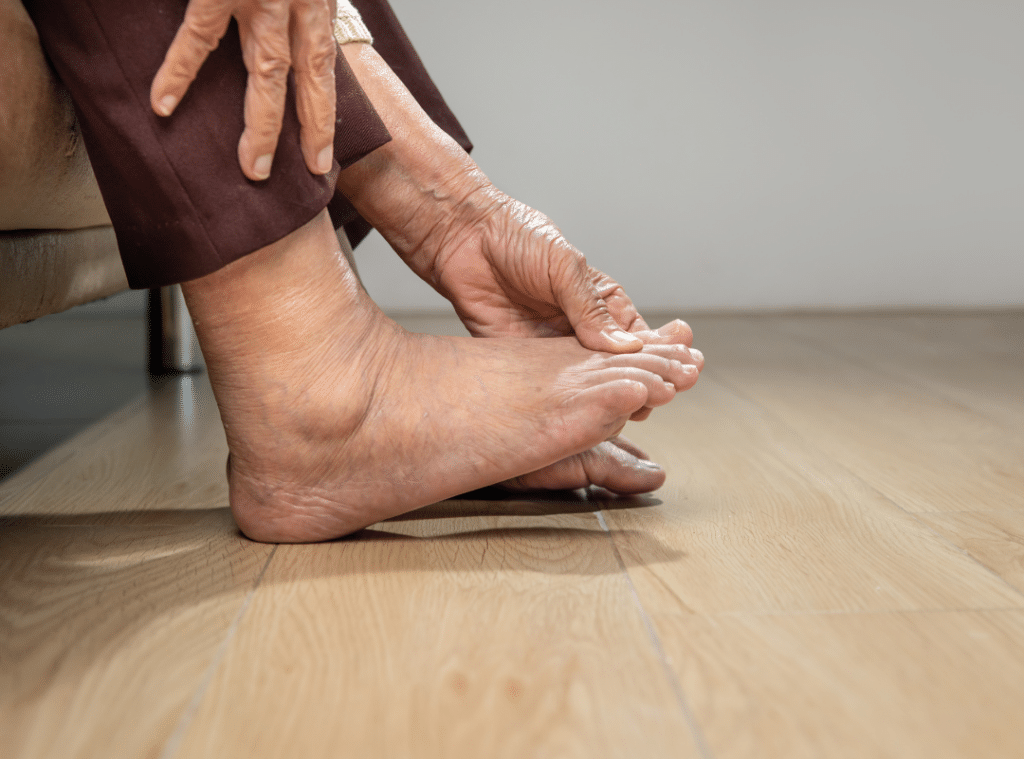Signs of Nerve Regeneration in Seniors Explained Clearly
Understanding the signs of nerve regeneration is essential for seniors experiencing recovery after injury, surgery, or chronic conditions like neuropathy. At Westmont of Fresno, many residents are navigating this journey and seeking clarity on what symptoms to expect. As nerves begin to heal, your body often signals this through various physical sensations and improved functionality. Recognizing those signs helps you track your recovery and take control of your healing.
This guide will help you identify the most common and subtle changes that signal progress. It also explores whether burning is a sign of nerve healing, what compressed nerve healing signs look like, and whether twitching is a sign of nerve healing. From sensory changes to lifestyle adjustments that can support recovery, this comprehensive guide is designed to help you or your loved one feel more informed and reassured every step of the way.
Understanding the Process of Nerve Healing
Nerves heal in a structured but slow manner, often taking weeks or months depending on the cause and severity of the damage. After injury, the body triggers a process where damaged nerve fibers begin to regrow with the help of specialized cells called Schwann cells. As these fibers reconnect to their original pathways, patients begin to notice gradual improvements in sensation, mobility, and comfort.
This process is not always linear. You might feel a mix of discomfort and progress at the same time. The key is to understand that not all pain or tingling is negative—it can often be a signal that healing is happening. According to research and expert care teams, signs of nerve regeneration often include tingling, twitching, burning, and gradual return of movement or feeling in the affected area.
Recognizing Common Signs of Nerve Regeneration
Healing nerves don’t go unnoticed. Here are the most recognizable signs of nerve regeneration:
- Tingling or prickling sensations
- Burning or warmth in affected areas
- Sudden muscle twitching or spasms
- Improved strength and motor coordination
- Increased sensitivity to temperature or touch
Let’s take a closer look at some of the most frequently asked questions that arise during this healing process.
Is Burning a Sign of Nerve Healing?
Yes, burning is a sign of nerve healing, especially when accompanied by reduced numbness or pain elsewhere. As the damaged nerve fibers regenerate and reconnect, the brain may interpret the returning signals as burning or tingling. This doesn’t mean your condition is worsening. In fact, it often reflects heightened sensitivity due to nerve fiber regrowth. While it can be uncomfortable, it is often temporary and manageable with guidance from your care team.
Is Twitching a Sign of Nerve Healing?
Muscle twitching is a sign of nerve healing and is generally a positive indicator. It happens when nerve signals are restored to muscles that had been inactive. These involuntary movements suggest that your motor nerves are beginning to work again, reestablishing the connection between your brain and the affected muscle groups. While they can seem odd at first, twitching is rarely a cause for concern and is often considered part of the natural recovery cycle.
Compressed Nerve Healing Signs
Healing from a compressed nerve can take time, but some clear compressed nerve healing signs can give you reassurance that recovery is on track. These include:
- A gradual return of sensation to previously numb areas.
- Less frequent or severe episodes of sharp or radiating pain.
- Improved strength in limbs or extremities.
- Reduced muscle tightness and inflammation.
These symptoms reflect that pressure on the nerve is easing, and your body is responding well to therapy or medical care.

Signs of Nerve Regeneration in Feet
The feet are a common location for nerve damage, particularly in seniors with diabetes or circulation issues. Watching for signs of nerve regeneration in the feet is crucial to tracking progress. Look out for:
- Warming or tingling sensations in your toes.
- Better balance and coordination when walking.
- Less numbness or tingling.
- The ability to feel textures or temperatures again.
If you’re noticing any of these changes, your nerves may be actively repairing themselves. This is a good time to reinforce healthy habits that support healing. For more on how diet plays a role in nerve repair, explore foods that help neuropathy and improve nerve health.
What Are the Stages of Nerve Healing?
Nerve repair generally occurs in four major stages. Knowing what are the stages of nerve healing can help you better understand your symptoms:
- Degeneration – The damaged section of the nerve breaks down and prepares for regrowth.
- Regeneration – New nerve fibers begin to grow and extend toward the target tissue.
- Remyelination – Protective insulation around nerves is rebuilt to improve signal strength.
- Functional Recovery – Muscle control and sensation return gradually.
Each stage comes with its own set of changes, so don’t be surprised if your symptoms evolve over time.
Lifestyle Tips to Support Nerve Recovery
Healing from nerve damage requires more than just time—it also depends on your daily actions. Nutrition, movement, and rest are the pillars of effective nerve healing. Here are some ways to support signs of nerve regeneration naturally:
- Eat nerve-supportive foods rich in B-vitamins, Omega-3s, and antioxidants
- Exercise gently to improve circulation and reduce stiffness
- Get quality sleep, as your body repairs during deep sleep
- Stay hydrated and avoid smoking, which can restrict blood flow
Check out more on nutritional needs for older adults to optimize your daily choices for recovery.
When to Speak to a Doctor
Even if you’re noticing progress, staying in contact with a healthcare provider is essential. You should reach out if:
- Symptoms worsen instead of improving.
- New or sudden numbness appears.
- Muscle weakness prevents daily tasks.
- Pain is persistent or extreme.
Early intervention can prevent setbacks and ensure you’re on the most effective recovery plan. Your care team can also recommend physical therapy, medications, or supplements if needed.
Extra Tools That Support Nerve Healing
In addition to lifestyle and medical support, a few extra tools can speed up your recovery:
- Nerve health supplements like alpha-lipoic acid and B-complex.
- Acupuncture or massage for pain relief and circulation.
- Physical therapy programs are customized to your condition.
Regain Hope with Every Sign of Progress
Healing from nerve damage is a marathon, not a sprint—but the signs of nerve regeneration are there if you know how to look for them. Whether you’re feeling the warmth of sensation returning to your feet or wondering if burning is a sign of nerve healing, every small improvement is worth celebrating.
At Westmont of Fresno, we’re committed to walking with you through each phase of recovery. If you have questions or want to experience how our supportive community helps residents thrive, schedule a tour today or call us at 559-446-1266.
Your healing matters. And every twitch, burn, and tingle just might be your body telling you that recovery is already happening.
Frequently Asked Questions
How do you know if your nerves are healing?
As nerves begin to regenerate, you may notice tingling, a “pins and needles” sensation, or slight discomfort in the affected area. Muscle strength and coordination can also gradually return. Healing nerves might also become more sensitive before they fully recover. These are all positive signs, but progress may be slow and vary by person.
How long does it take for nerve damage to heal?
The healing process for nerve damage depends on the type and severity of the injury. Minor nerve injuries may recover in weeks, while more serious damage can take months or even years. On average, peripheral nerves grow about one inch per month. Your doctor can give a better timeline based on your specific case.
What helps repair your nerves?
Proper nutrition, physical therapy, and certain medications can support nerve repair. B vitamins, especially B1, B6, and B12, are known to aid nerve health. Staying active with doctor-approved exercises can also stimulate nerve regeneration. In some cases, therapies like acupuncture or electrical stimulation may be recommended.
How to know if nerve damage is permanent?
If there’s little to no improvement after several months of treatment, the nerve damage may be permanent. Permanent damage often involves consistent numbness, weakness, or lack of sensation. Diagnostic tests like EMG or nerve conduction studies can help confirm the extent of damage. A healthcare professional can provide a clear diagnosis and guidance.








